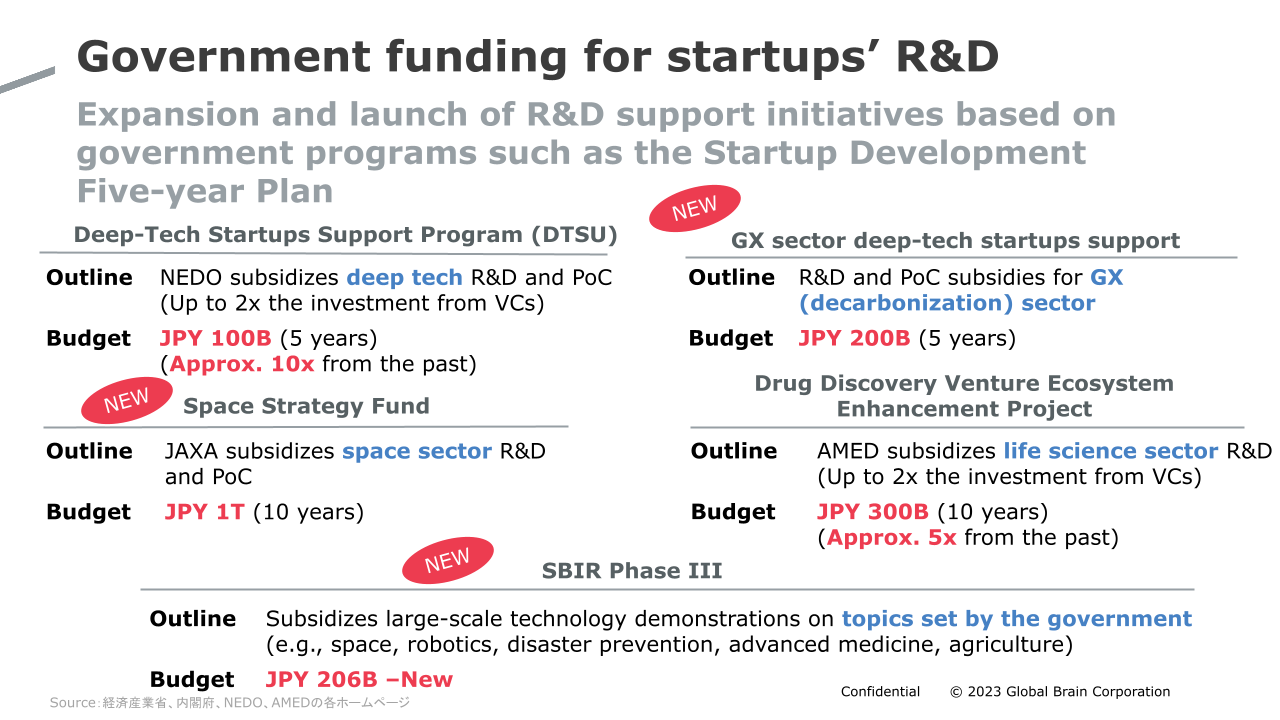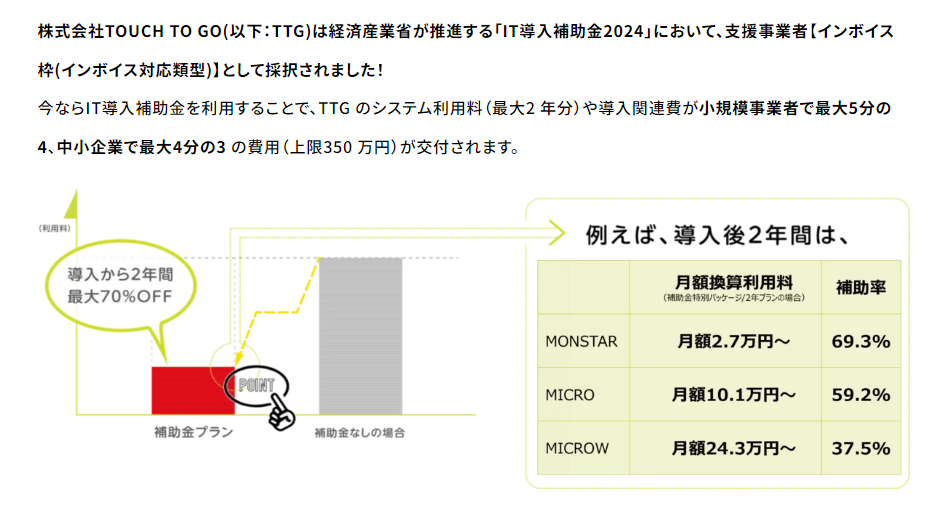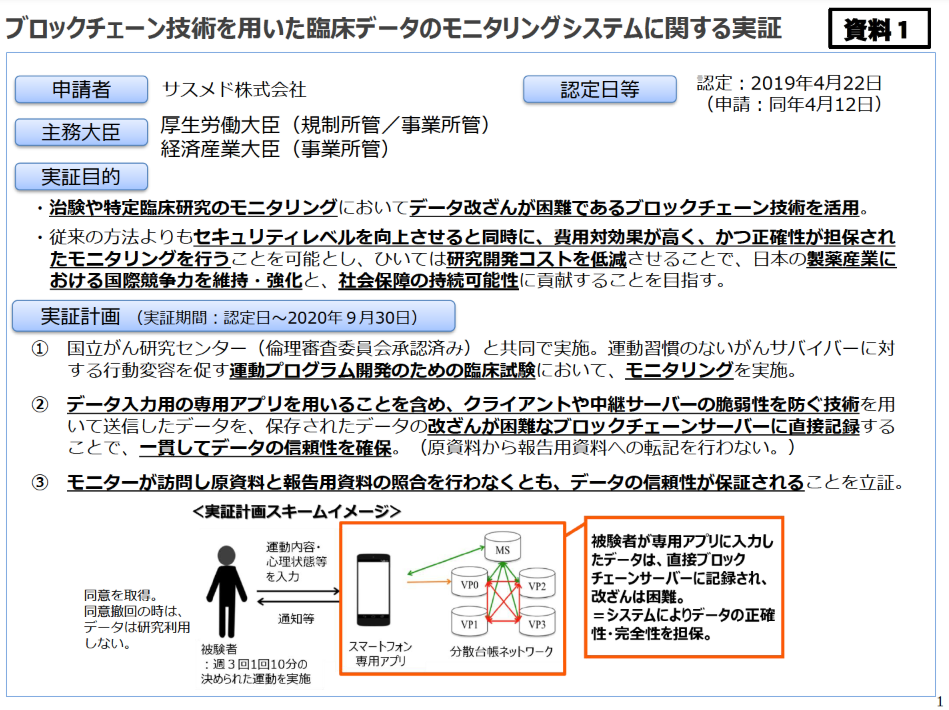It’s Not Just About Lobbying—The Latest Government Relations Cases Connecting Startups with the Administration
An insight into the benefits of Government Relations (GR) that engage the Japanese government and municipalities.

Written by Ko Kawaragi
*The hyperlinks with an asterisk will direct you to websites/articles written in Japanese.
My name is Ko Kawaragi and I hold the role of GR for our portfolio startups at Global Brain (GB). I previously worked for the Ministry of Economy, Trade and Industry, where I was responsible for designing subsidies, tax, and legal systems for small and medium-sized enterprises and startup companies.
Not many of you are probably aware of “GR.” But at the same time, I imagine many of you are interested in recent news such as the end to Japan’s ban on ride-sharing*, the launch of the JPY 1 trillion Space Strategy Fund, or the massive startup subsidy of over JPY 10 billion per company* which are all about collaboration between the government/municipalities and startups. It is part of GR’s role to catch these trends and contribute to the growth of our firm. In this article, I would like to bring up recent examples and explain what GR means for startups and how they can use GR effectively.
What is GR?
There is no one fixed definition for GR, but we can find descriptions such as “working to influence the administration through gathering information, lobbying, and media strategies,” or “a means to lobby against the decision-makers who have the authority, namely the administration, government, or the Diet.” In short, we may well call GR “the hub for companies and the government.”
It is common for large companies to have GR-dedicated departments that undertake communication with governmental agencies. Recently, we are seeing more and more startups that have their own GR teams, for example, Mercari* , freee*, and Fast DOCTOR*.
Now, what significance does GR have for startups? You may have a strong image that GR is about “lobbying against the government to achieve regulatory reforms,” as we see happening with ride sharing and e-scooter businesses, but this is actually only one aspect of GR.
The key outcomes that startups can gain through GR activities
Startups work on GR to accelerate their businesses, which is quite obvious. Although the way GR activities can contribute to boosting growth depends on the business model and growth stage of a company, here I will share some common patterns which describe the outcomes that startups can gain by working on GR.
1. Accelerate research and development with the government’s help
The government is expanding its support for the research and development projects of startups at a speed which was unimaginable a few years back.
For example, in 2023, Japan’s public organization New Energy and Industrial Technology Development Organization (NEDO)’s subsidy for deep tech research, development, and PoC was expanded to 10 times the original budget. This year in 2024, a new fund has been launched which offers a total of approximately JPY 40 billion as subsidy to startups working on green transformation (decarbonization).
Furthermore, the government’s Small Business Innovation Research (SBIR) framework made the headlines last year. It was announced that a funding of several billions of yen to over JPY 10 billion will be made per company for startups in sectors including space, nuclear fusion, and mobility.
Deep tech startups generally require a long time to commercialize their offerings and need access to hefty research and development fees. The government subsidies do come with obligations and limitations (e.g., usage restrictions, reporting to the government) given they are sourced from taxes. However, if startups utilize the subsidies with an understanding of the conditions, this public money can contribute greatly to accelerating the research and development activities of startups.

2. Reduce the implementation costs for customers
In addition to internal purposes, there are other ways to use the government’s funding. Government subsidies can also be very effective when used to reduce implementation costs for customers.
TOUCH TO GO which offers unmanned payment devices/systems for restaurants and retail stores is using the government’s IT introduction subsidy when proposing its product to customers. With this subsidy, small and medium-sized companies can receive up to JPY 4.5 million upon implementing an IT system. This lifts the burden on TOUCH TO GO customers since they can reduce the initial cost for implementing the unmanned payment device. I would say this is a good example for perhaps B2B SaaS companies.

3. Address legislative and regulatory reforms to make the business environment more comfortable
“Laws and regulations” may sound tricky, and some companies may be “unsure whether their new business is legally compliant.” Or it might be that “although their businesses are not facing any problems today, they will be greatly impacted by upcoming regulations.” These kinds of things are especially common in sectors such as finance, medicine, mobility, and communications which are all closely related to laws and regulations. Even when businesses do not have clear ideas as regards to how to address laws and regulations, acting from the GR point of view could give a head start.
Here, I will introduce an example from the medical field. When pharmaceutical companies submit a drug approval to the government, they need to confirm on site at clinical trials and research sites that the “data submitted to the government” are consistent with the “original documentation” (i.e. there are no fabrications/falsifications). This process requires a huge amount of cost. To solve this problem, SUSMED was trying to use blockchain technology to develop and offer an alternative method that does not require human intervention. However, they were uncertain whether this new method was compliant with the laws and regulations.
Therefore, using the Japanese government’s framework called “Regulatory Sandbox” they confirmed that their new method was effective. Based on that, they elicited an opinion from the Ministry of Health, Labour and Welfare that their service was legally compliant.
As this case shows, reducing or eliminating legal risks and creating an advantageous environment for the company’s business development is an important part of GR.

4. Make the public sector a customer and grow the business
Government agencies or municipalities can become customers depending on a startup’s business model. SpaceX in the US is a good example. This startup signed multiple contracts with government institutions as their main customers, for example NASA, raised funds from investors including VCs, and achieved rapid growth.
And this is not just relevant to the space/defense sector. In Japan, under a project named The Vision for a Digital Garden City Nation, municipalities are signing procurement contracts with private companies to work on initiatives such as smart cities and digital transformation in government services. Quite a number of startups are involved in multiple projects for different municipalities. The government has, with its initiative to boost contracts with startups*, set a JPY 300 billion target as its total annual contract value with startups and small and medium-sized businesses.
Also, increase in sales is not the only advantage of contracting with the public sector. Especially for early stage startups, acquiring its first customers is the most important challenge. By landing a public sector client as its first customer, a startup can increase its credibility and awareness and open up doors to other customers including both public institutions and private companies.
Wrap-up
In this article, I explained the significance of GR for startups, shared several different ways a startup can leverage GR, and how effective that might be.
GR activities can be a big push for startups aiming to change regulations, but it can also become a meaningful growth factor for various other startups including B2B businesses such as deep tech and SaaS and startups that target the public sector.
However, startups that have never worked on GR may be at a loss where to start from. To help you out if you are one of them, my next article will be on “The Basic Steps of ‘Startup GR’.”
(Follow our Global Brain’s official LinkedIn account to get updates on GB Universe.)
References
-
TOUCH TO GO Co., Ltd. “\2024 IT introduction subsidy application start / System usage fee 70% OFF for up to 2 years!”. TOUCH TO GO for unmanned payment and self-checkout. 2024-03-28. https://ttg.co.jp/info/2024/03/8737/#, (Date accessed: 2024-05-14)
-
SUSMED, Inc. “SUSMED Brings Greater Efficiencies in Clinical Trials by Using Blockchain Technology–Deregulations with Remarkable Results from a Regulatory Sandbox”. SUSMED, Inc. 2020-12-08. https://susmed.co.jp/wp-content/uploads/2020/12/a2aedf_eb79a9e0fe044421a6a0dc820eb4233f.pdf, (Date accessed: 2024-05-14)
-
Cabinet Secretariat. “Regulatory Sandbox.” Cabinet Secretariat. https://www.cas.go.jp/jp/seisaku/s-portal/regulatorysandbox.html, (Date accessed: 2024-05-14)

Ko Kawaragi
Global Brain
Corporate Management Group
Director, Researcher
Ko joined GB in 2023. He is responsible for Government Relations covering startup policies and researching the investment trends of different countries.